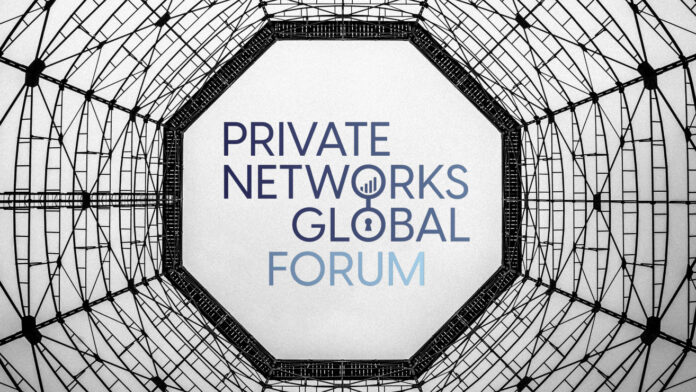A panel discussion with Microsoft and Intel at Private Networks Forum in May yielded some helpful insights about the push-and-pull for enterprises to deploy private 5G networks. The conversation, under the heading Mastering Each Vertical Via New Partnership Ecosystem, zipped through a number of points, neatly summarised below, which highlight the value of 5G technology to drive change within different industrial sectors, and also the complexity of deploying it in a joined-up fashion with other digital pyrotechnics, and other ecosystem partners.
The session was chaired by Viet Nguyen, vice president of technology at 5G Americas, and pressed Caroline Chan, in charge of Intel’s 5G infrastructure division and network platform group and Jaione Pagazaurtundua, in charge of Microsoft’s private MEC portfolio, for answers, effectively, on how to buy and sell private 5G systems. This post is a quick-fire summary of their chat, which seeks to simplify the conversation in easy memo-form (five technology drivers, five business drivers, plus other observations), which are variously (in random order) bunched into 10 bullet-points below.

1 | BRIDGE TO THE CLOUD (OR: NO TECHNOLOGY / SUPPLIER IS AN ISLAND)
This is the big point, which Enterprise IoT Insights (before it became part of RCR Wireless) used to write all the time: that IoT is a team sport, and not a silver-bullet game. Chan at Intel said: “The private network is the bridge from the cloud to the edge, especially with AI. All enterprises are talking about AI, and how it will transform their operations. Which means a lot of data at the edge – which is contextual, and has latency [requirements]. [And it is also] a way to connect together partners on the cloud side, the network side, and enterprise side – to drive this new marketplace.”
There is a lot to unpack in this statement: the idea that Industry 4.0 (or whatever you want to call it) will explode in a blast of data at the edge, in the factory and plant; that AI is the start of the show, and that 5G is the support act, in the end (albeit one that may well steal some of the scenes it appears in, where the camera-cuts are sharpest and the impact is deepest); and that the whole thing will take a village (just to mix our metaphors and clichés). Microsoft does not even refer to it as 5G, noted Pagazaurtundua; it is all just ‘private MEC’ – as in multi-access edge compute.
It is the bridge, she agreed, to conjoin centralised and distributed compute resources. She commented: “Private 5G and private MEC is the way to enable enterprises to achieve more as they run through this digital transformation journey. We want to make it simple for them to access the right technologies. The big outcome… is industrial transformation… So it is not just connectivity or 5G, [but] about making it simple to make all of those technologies accessible to the enterprises in all industries… No single company will do that on their own. It is about a partnership ecosystem.”
2 | FIVE TECH DRIVERS – COVERAGE, CONTROL, CONNECTIVITY (#1, #2, #3)
We know these already, as well; so much has been written about the tech features that are supposed to make 5G (yawn) special. But they are perfectly valid, and worth hearing again; and Chan at Intel explained them well in terms of the pandemic experience. She suggested supply-chain constraints through Covid-19 lockdowns had forced distribution and shipping businesses, particularly in large yards and ports, to put renewed focus on how to connect, track, and automate their systems – and that, in the end, private cellular has afforded them a late leg-up.
“AI is a very good example [of a key business driver], but the reality really hit with the pandemic,” she said, noting that Wi-Fi in shipping ports and oil and gas production has comprehensively failed as an outdoor connectivity technology. “We use Wi-Fi every day, a port or logistics environment needs connectivity outside.” Coverage, then, is the a key technology driver; the other big ones, suggested Chan, are control (covering sovereignty and performance) of networking, and therefore of data, and also just a new type of connectivity to stand-up the kind of IoT network that will connect ever last ‘thing’ that needs to be connected to drive digital change.
She said: “Private doesn’t mean the enterprise has to operate [the network by itself]; it could be an operator providing that service. [What it means is the enterprise can] drive data sovereignty to control its own security policy… It is [also] a network that serves a purpose – which many times is driven by the OT side. It is not your typical network for iPhones. The other thing is you do more things with IoT – it is a network in a different dimension… The trigger point is to drive better operational efficiency, to get more data at the right time. I cannot say enough that the edge and AI… driving the need for a network that serves the purpose of enterprises.”
3 | FIVE TECH DRIVERS – MOBILITY, RELIABILITY (#4, #5)
Pagazaurtundua at Microsoft added two other notes about the technological value that private 5G delivers, restating also the above point (#1) that 5G (or any tech driver) does not amount to a hill of beans all by itself. She said: “From a Microsoft perspective, the driver is not 5G. 5G on its own does not deliver any value. So we talk about what we call ‘modern connected applications’ – which are the new applications and services enterprises need, like for robotics and AGVs in the factory. These are things that require mobility, that require low latency, that require security.”
But, like she also noted, these require mobility, importantly – which Wi-Fi screws-up with messed-up handovers between base stations, as ‘things’ like autonomous mobile robots (AMRs) and vehicles (AGVs) roam about an enterprise venue. But it is not just mobility, but reliable mobility, that enterprises want – predictive connectivity is king, the message goes. Pagazaurtundua commented: “These modern connected applications…require reliable connectivity. They have more stringent requirements in terms of latency, in terms of bandwidth, in terms of mobility, and in terms of security. Those are key things that only 5G can deliver.”
She added: “The driver for us is not that 5G is the coolest thing ever [but that all these] new applications have very stringent requirements… to run closer to where the data is generated, [for] big hungry bandwidth needs, flexibility to move things around… Our focus is on enabling those [applications] as part of our private MEC and private 5G [portfolio].”
4 | BLUEPRINTS FOR (USE CASES FOR) BUSINESS PROBLEMS
The idea that a set menu of Industry 4.0 designs will emerge, some day, to show enterprises short-cuts schematics to deploy infrastructure to meet a range of cross-sector enterprises use cases is great, but judging by the discussion, no one has all the answers yet, and any such ‘blueprints’ remain a way off. But the theory is correct. “We’ve got to make it easy. There needs to be a blueprint,” said Chain at Intel. Until that point, however, the process is a deliberate one with every enterprise, carried out in co-creation with an array of ecosystem partners.
Chan explained it: “You find the business problem, break it down… and put [together] the top 10 use cases to deploy – [and you do all of that] before [putting together] a quote/unquote ‘blueprint’… to go into a large deployment. We see that in industrial, we see that in oil and gas, and now we’re seeing that in some of the smart grid operators. And the problems you’re trying to solve in smart-grid could be quite different to what you’re solving in manufacturing, say. But if you break down the business problem into use cases, you tend to see some alignment… [And] hopefully you can create a set of blueprints that the ecosystem can quickly adopt.”
This article is continued here.

